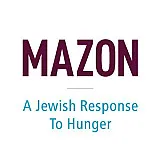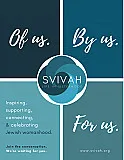Order of the Seder

There are fifteen steps in the Seder, described in the Haggadah. They are usually sung, to a special melody, at the beginning of the Seder and sometimes when beginning the next step in the process. The word “Seder” means “order” and we follow the steps one by one in the Haggadah.
1) Kadesh - קדש
Recite the Kiddush. We make a special Kiddush for the Festival of Passover. This is the first glass of wine (There are 4 glasses during the 15 steps).
2) Urchatz - ורחץ
Wash Hands. Since the next step in the Seder will be the eating of a vegetable dipped in salt water we wash our hands to be ritually clean.
3) Karpas - כרפס
Eat the green vegetable dipped in salt water. Salt water is symbolic of the tears shed by the Jewish People in Egypt during slavery and throughout our history.
4) Yachatz - יחץ
Break the middle matza and hide half for Afikoman. The smaller piece, represents the “bread of affliction,” is returned to the Pesach plate to be eaten later for the Mitzva of Matza. The larger piece, representing the Pesach Sacrifice, to be eaten at the end of the meal (Afikoman,”Desert”).
5) Maggid - מגיד
Tell the story of Passover. This is the part where the youngest child asks the four questions. We drink the second cup of wine. A new tradition of Miriam’s cup, which is filled with water, and the story of how she helped find water in the desert and how women have helped the Jewish people are told.
6) Rachtzah - רחצה
Wash hands before meal. This is the regular blessing recited before every meal in which bread is eaten, but during Passover we only eat Matza.
7) Motzi - מציא
Say Hamotzi (The blessing for bread) while holding the remaining Matzot.
8) Matza - מצה
Special blessing for the matza. Everyone eats a part of the top and the middle matza.
9) Maror - מרור
Eat the bitter herb. Everyone eats lettuce leaves or stalks which are dipped into Charoset (a mix of nuts, apples, cinnamon, and sweet wine ).
10) Koresh - כרך
Eat the bitter herb and matza together.
11) Shulchan Orech - שלחן ערך
Serve the festive meal. The term Shulchan Orech actually means “set table”.
12) Tzafun - צפון
Eat the Afikoman. The Afikoman, which symbolizes the Pesach Sacrifice, which was eaten at the end of the meal. Some traditions ransom it from the children who have “hidden” it. Other traditions put the Afikoman into a pillow case to symbolize that when we left Egypt we carried everything on our backs. The pillow case is passed around the table during the Seder.
13) Barech - ברך
Say the grace after meal. The Third Cup of Wine is Drunk. The Cup of Elijah the Prophet is filled.
14) Hallel - הלל
Recite Hallel. We recite the second part of Hallel, the selection of chapters of Psalms used as special praise for Hashem.
15) Nirtzah - נרצה
Conclude the Seder. We conclude with an additional prayer that we conduct the next Seder in Jerusalem.
Inspired to create
your own Haggadah?
Make your own Haggadah and share with other Seder lovers around the world
Have an idea
for a clip?
People like you bring their creativity to Haggadot.com when they share their ideas in a clip
Support Us
with your donation
Help us build moments of meaning and connection through
home-based Jewish rituals.
OUR TOP CONTRIBUTORS
Passover Guide
Hosting your first Passover Seder? Not sure what food to serve? Curious to
know more about the holiday? Explore our Passover 101 Guide for answers
to all of your questions.






















